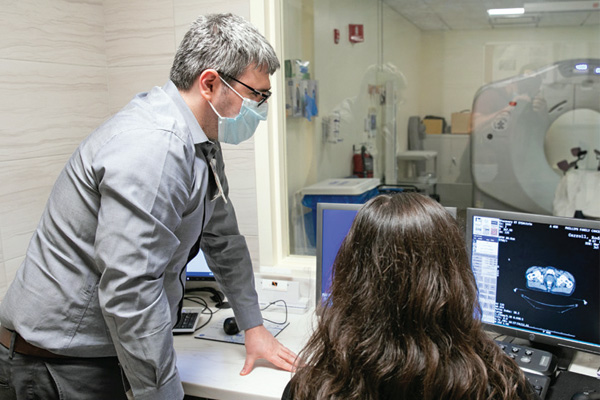A Step-by-Step Guide for Our Patients
Consultation
You will meet with the radiation oncologist and nurse to discuss treatment and answer any questions you have about your care.
Positioning, Tumor Localization and Tissue Mapping (Simulation)
Proper positioning is important. Devices are used to keep your body in a comfortable and stable position during treatment. A computed tomography (CT) scan, often with dye or contrast, will be performed to get a 3D picture of the tumor.
Computerized Treatment Planning
A magnetic resonance imaging (MRI) or positron emission tomography (PET) allows the physician to mark the tumor area and the normal tissues. Dosimetrists and physicists map out where the tissue is located and design a plan to optimize the radiation dose to treat the tumor.

Pre-treatment Quality Assurance (QA)
Each treatment is unique. We perform an in-depth quality assurance check prior to the every treatment to ensure that the accurate dose is delivered.
Verification Simulation (V-sim)
This process is a trial run. You are placed in the actual treatment simulation position along with the immobilization devices to assure accuracy. Measurements will be checked and the beam arrangements will be assessed to confirm they match the treatment plan.
Treatment Delivery
State-of-the-art technology is used to maintain precise positioning and accurate targeting. The machines and technology are called cone-beam CT (CBCT), optical surface monitoring system (OSMS) and respiratory gating Follow up and Surveillance. Doctors and nurses check your status once a week or as needed. When treatments are complete, you will be scheduled for follow-up visits to monitor progress post-treatment and evaluate healing and tumor control.

